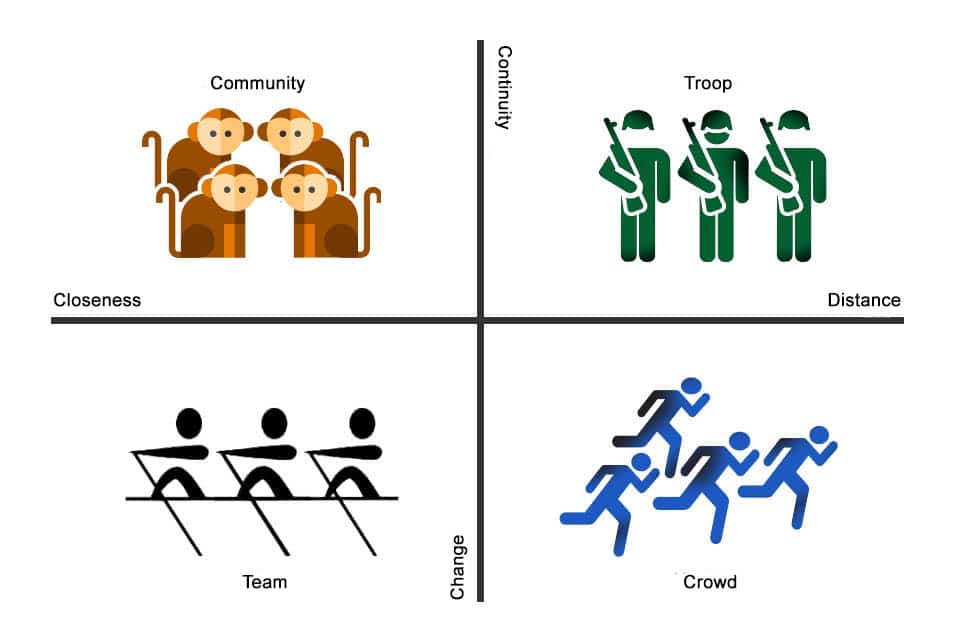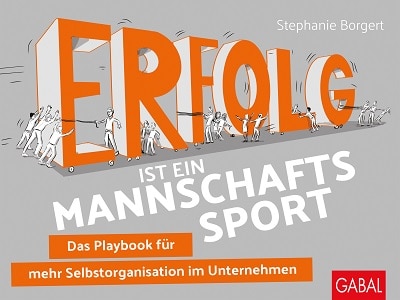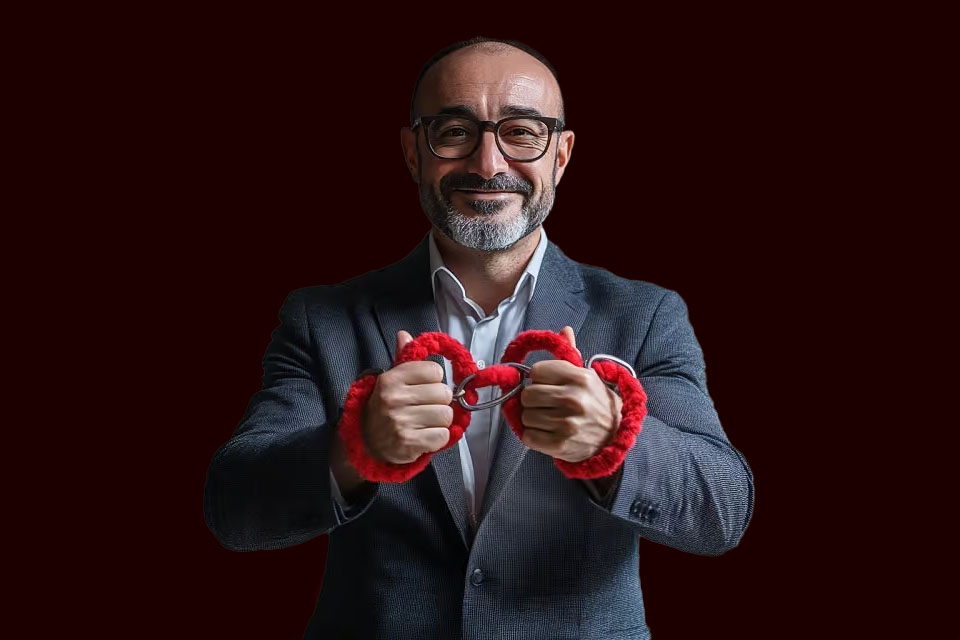Change resistance in a team
“We want to stay the way we are!”
There is still much written and discussed about the famous “resistance to change” in the countless transformations and change measures. The focus is almost exclusively on people as individuals. But what happens when an entire team is resistant? Even with advance notice, every suggestion to change is rebuffed? Does that not exist? Yes, it does, and I would like to share an experience report from my counselling practice. Of course, this cannot be a complete description and I am aware that I am involved as a counsellor and that I am formulating the aspects I have selected from the position of an observer.
The mission: to “disrupt” the team.
The team of 9 heads of department has been working together for many years. They all have a scientific background and are responsible for work areas where accuracy and freedom from errors are important. From a purely technical point of view, the different departments have few points of contact; the company is formally organised according to the division of labour. The division manager wants this management team to grow together into a visionary, conspiratorial and flexible team. At the same time, agility is demanded, this applies to all departments in the company and so Scrum training and Agile Leadership training courses have been taking place for some time. In this context, the management repeatedly emphasises the importance of the attitude behind agility.
A few months ago, the head of the same management team asked me to accompany him and the managers on their way over a longer period of time. The clear assignment for me: disrupt. That means encouraging the team to reflect, mirroring my observations and setting impulses for change. In a get-to-know-you workshop, I had the team acknowledge my “disruptive task”. After all, there is often a discrepancy between the official mandate and what the team is really looking for and wants.
We start working together and I experience a group of people who are polite, nice and humorous to each other. But their communication is above all one thing: fact-oriented. During the first 2-day retreat together, I notice a few things. The confusion is great when there is only a rough agenda on my part, because it is unclear exactly what is to be “worked through” by the participants. The confusion is expressed again and again over the two days. At least we start with the formulation of expectations. It is striking that everyone in the group names “openness” as a central aspect of the event. It is also striking how often formulations such as “we should make decisions here and stick to them, but we’ll never manage that” or “we should also implement something, but that doesn’t work out” are chosen.
In the subsequent course, the contributions of individuals seldom refer to each other and few questions are asked. Wanting to understand how others think does not seem to carry much weight in this team. There is also little evidence of the required openness. Offers to reflect on themselves as a team or on the topic of leadership are more likely to be accepted than used. My mirroring of the communication patterns in the team leads to collective silence and subsequent complaints to the head of department. The decisions made at the end of the retreat are immediately questioned again in individual discussions with the head of department.
When the topic of agility comes up, a central moment arises. The content is about the results of an internal study on the agile values lived, which were asked about in interviews with employees. The team asks me what I think of the results. I express my surprise, because without a hint I would not have suspected that agile work was being done here. Of course, I justify this by saying that agility does not take place in the team’s communication (in the extract I experience). Boom, that seems to have sunk in. The silence in the group lasts a while and then I am enlightened. After all, they use a Kanban board and, following the appropriate training, a department head immediately introduced consensus as a decision-making methodology in her teams. Afterwards, the management team also has a discussion about this with the head of the department. “Mrs. Borgert comes from IT and naturally has completely different requirements in terms of agility. That doesn’t fit in with us”. There are many other situations in which even small ideas for changing established routines are immediately rejected or reinterpreted. My wish to address “disturbances” directly to me goes unheeded.
An attempt to explain the group dynamic phenomena
And so I try, as always, to make sense of my observations. There are many explanations from different disciplines. Here and now I would like to focus on group dynamic phenomena. To do this, I will use the well-known Riemann-Thomann model¹, which the psychologist and author Eberhard Stahl² has extended to the analysis of groups. Three fundamental questions drive me and should thus provide starting points, which I will briefly outline here.
1. Is the leadership team a team?
The answer is clearly: No. The leadership team behaves like a loose troop. The factual orientation is clearly in the foreground and communication is politely distanced. From a purely technical point of view, there is no need (from the point of view of the individual managers) to work more closely together. Even if the division manager verbally offers a “hierarchy-free space” for this group, the formal hierarchy is always present and binding. “If our boss says so …”
Consistency is an important basis for this group of managers and linguistic images from the military are conspicuously often used in discussions.
Group field types in the Riemann-Thomann model
It is only logical that the leadership team (I continue to use the term team here for simplicity) reacts less enthusiastically to my invitations to self-reflection and mirroring, because I am getting too close to them. They would also have to give up a little distance in their togetherness, and for that they would need an occasion that is relevant to them. If one tries to change troops in the direction of closeness/change, an uphill battle quickly ensues. This is hardly possible without a valid reason for the group itself. This also gives us an idea of how the demand “work agile now” is going to work. However agility is defined in the concrete context of a company, it needs a corresponding degree of proximity and change. Agility is only possible in a team, if only because the negotiation and agreement of cooperation must be binding and limits the degree of freedom that a team offers.
2. Social identity and group self-image
As human beings, we are not finished developing our identity at a certain point. Identity is a lifelong process that has a lot to do with our belonging to groups. I am an author, a speaker, a child of the Ruhr area, a BVB fan, a sports enthusiast and much more. In this excerpt of my self-description, group affiliations can be found. Depending on the current context, the priorities change, but groups are always an essential part of our identity. Just as we as individuals prefer a positive self-image, groups try to create positive distinctiveness. To do this, a group distinguishes itself (ingroup) from other groupings (outgroup). This is easy and quick; a formal organisational structure based on the division of labour, for example, automatically creates a “them” and “us”. Sales versus service or IT versus specialist departments or controlling versus development or, or, or.
The demarcation ensures a positive self-image of one’s own group, because it confirms to itself that it is more innovative, smarter, faster or somehow better than the outgroup. But what happens when the self-image starts to falter? If I now question the fact that the division is working in an agile way, a strategy is needed to maintain the positive distinctiveness. In this case, the team chooses a different dimensional view; “Mrs. Borgert doesn’t know us at all and has other ideas about agility”. In this way they prevent further discussion with themselves and for the leadership team the topic is ticked off.
3. Dealing with pressure to change
So far, the management team (and its departments) has functioned well as a group and the fit to the task was given (no need for intensive cooperation). Now, however, there is a lot of pressure on the division. Apart from the market pressure, the company has announced an agility strategy. The group is to change. And so back to the Riemann-Thomann model. The management team would have to change its group field (distance/stability) to meet the new task. According to Stahl, it has three possibilities to react to the pressure to change:
Denial is one possible reaction. The demand for agility is simply ignored. If agility is just a fashion, as in many other companies, denial will be successful. By waiting and drinking tea, this team has already met many other demands.
Accommodation is the time-consuming and costly renegotiation of one’s own group contract. The group field is shifted or expanded, which requires discussion, reflection and binding agreements.
In my observation, the leadership team has chosen variant 3: Assimilation. Agility is reinterpreted or even fragmented in such a way that it can be “implemented” without changing routines and appointments. In this case, a few methods that are perceived as helpful are simply selected and that’s it. Customer centricity, continuous improvement or even autonomy of the work teams continue to be ignored. This reduces agility to absurdity, for the leadership team it enables a “we want to stay the way we are”.
Assimilation is a widespread phenomenon and that of a group. It is the ” arrangement” within the group that makes this happen, not the influence of a single person.
And the happy ending?
That is yet to come. From my perspective, there is no recipe, no ready-made solution for this task. Nevertheless, there are ideas and possibilities. The leadership team is now expanding to include new colleagues, which offers an opportunity to renegotiate the group contract. The appropriate storming phase will be important here, so that conflicts are not shifted to the issue level alone. In this way, the team could learn to create more closeness and to lift community above individual freedom at times. At the same time, the search for relevance is needed. This applies to agility as well as to changes in the market and their influence on the field in the future. What is really so relevant for the team that it is willing to change its group field? This is one of the essential questions we are now working on.
This field report leaves you, dear readers, without a final result. But instead, I hope, with suggestions for a look at group behaviour.
Notes (partly in German):
[1] Riemann-Thomann-Modell
[2] Stahl, Eberhard: Dynamik in Gruppen, Beltz, 2002
If you are interested in successful teamwork, we recommend the German book Erfolg ist ein Mannschaftssport by Stephanie Borgert.
You can find more perspectives from Stephanie Borgert on the t2informatik Blog:

Stephanie Borgert
Stephanie Borgert is a complexity researcher and engineering computer scientist. Managing complexity and dynamic, complex projects are her passions. This is because they include essential aspects such as leadership, management, communication, mindfulness and systemic thinking.
Together with her customers, she repeatedly finds that it is often not the large, styled and strict processes, but rather the many small adjusting screws in a system that make it more goal-oriented, appreciative and successful.
Stephanie Borgert, a former business columnist for the Frankfurter Rundschau, has now published eight books. Her book ‘Unkompliziert!’ was a business bestseller in 2018.
In the t2informatik Blog, we publish articles for people in organisations. For these people, we develop and modernise software. Pragmatic. ✔️ Personal. ✔️ Professional. ✔️ Click here to find out more.




